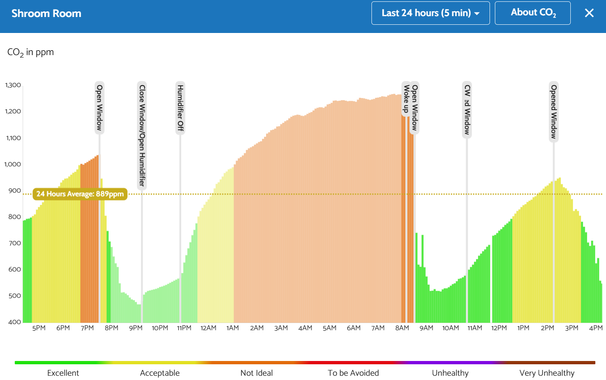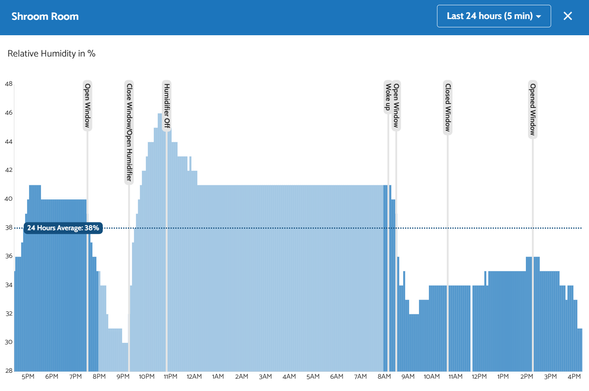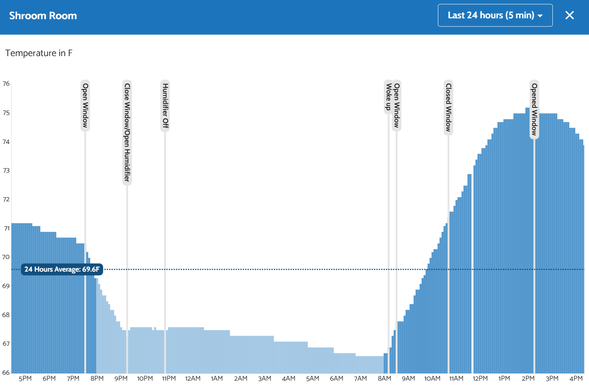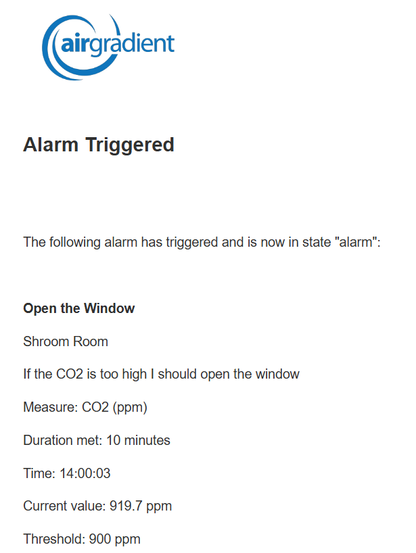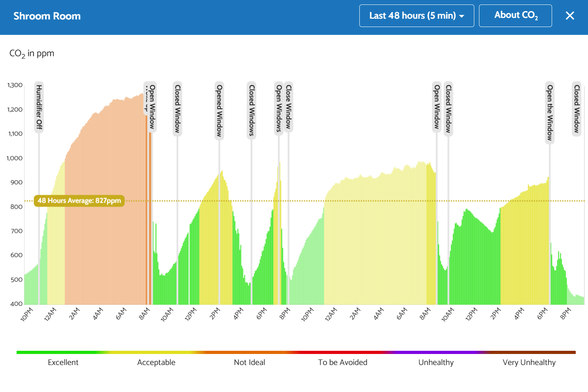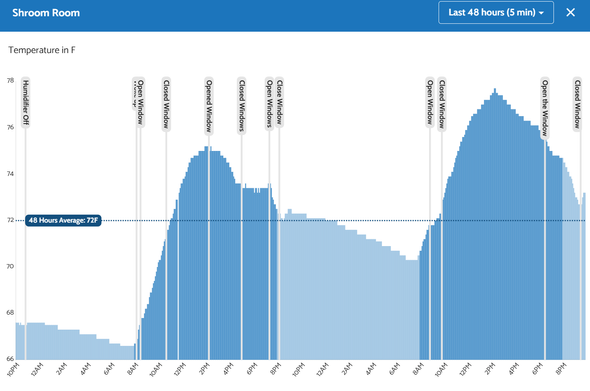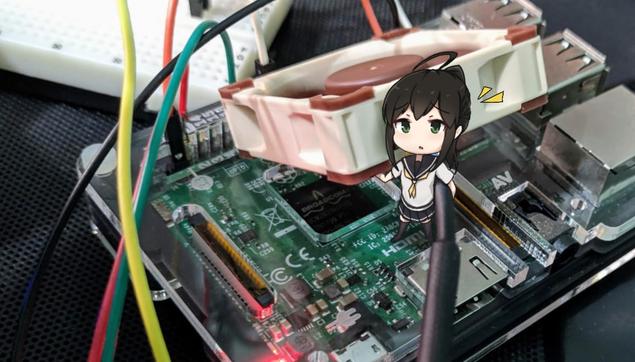- Water left in my humidifier when not in use will eventually evaporate ineffectively, I should only put as much water as I plan to use
- using the "Humidity Check" app, I found humidity is the lowest outside at 3 pm and the highest around 6 am. The best time to air out my apartment to reduce CO2 while minimizing humidity loss is the early morning and late evening. The exact timing may change with the weather and the seasons. This also means that when my apartment is the hottest during the middle of the day, I risk the most humidity loss if I use fresh air to cool down. This is fine during the winter, but could be more complicated to manage during warmer months.
#humidity #airGradient #airQuality #openSource
